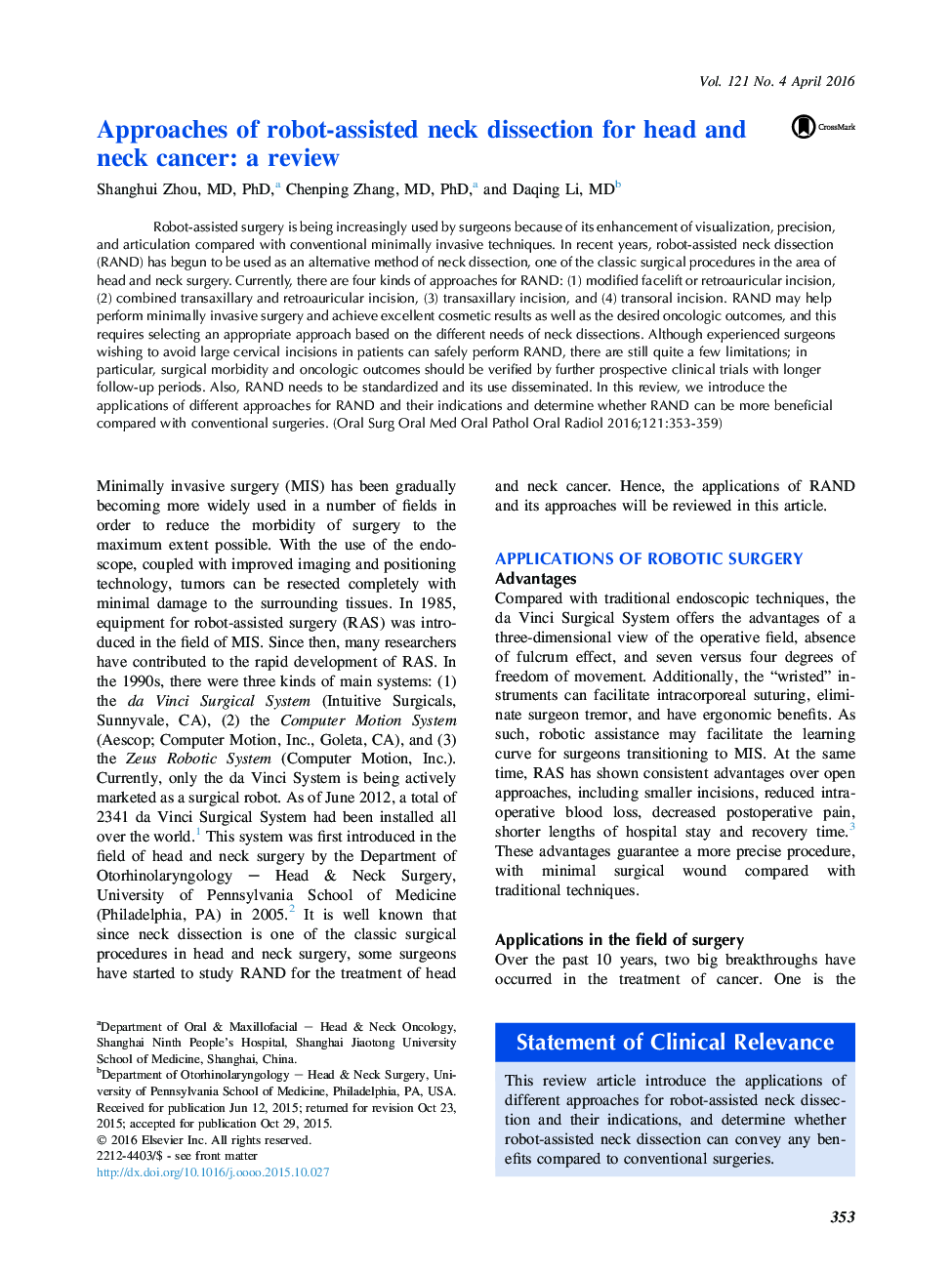| Article ID | Journal | Published Year | Pages | File Type |
|---|---|---|---|---|
| 3166611 | Oral Surgery, Oral Medicine, Oral Pathology and Oral Radiology | 2016 | 7 Pages |
Robot-assisted surgery is being increasingly used by surgeons because of its enhancement of visualization, precision, and articulation compared with conventional minimally invasive techniques. In recent years, robot-assisted neck dissection (RAND) has begun to be used as an alternative method of neck dissection, one of the classic surgical procedures in the area of head and neck surgery. Currently, there are four kinds of approaches for RAND: (1) modified facelift or retroauricular incision, (2) combined transaxillary and retroauricular incision, (3) transaxillary incision, and (4) transoral incision. RAND may help perform minimally invasive surgery and achieve excellent cosmetic results as well as the desired oncologic outcomes, and this requires selecting an appropriate approach based on the different needs of neck dissections. Although experienced surgeons wishing to avoid large cervical incisions in patients can safely perform RAND, there are still quite a few limitations; in particular, surgical morbidity and oncologic outcomes should be verified by further prospective clinical trials with longer follow-up periods. Also, RAND needs to be standardized and its use disseminated. In this review, we introduce the applications of different approaches for RAND and their indications and determine whether RAND can be more beneficial compared with conventional surgeries.
